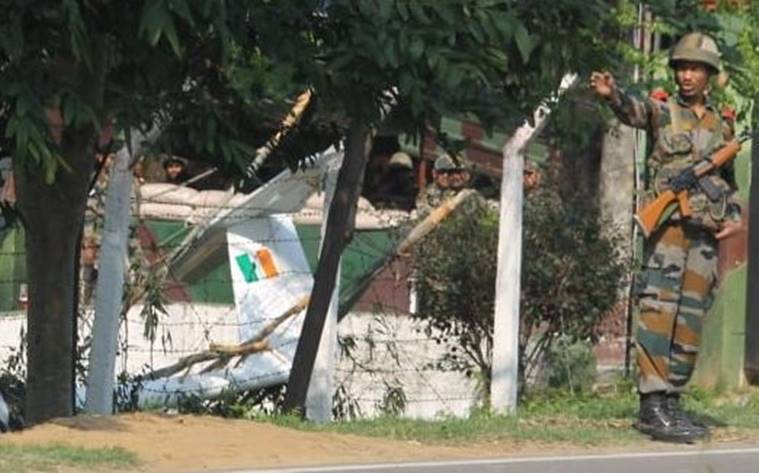For ease of understanding the Supreme Court’s (SC) judgment extending permanent commission (PC) to all Women Officers (WOs), including command opportunities, it is important to first understand what the army’s Arms and Services are, writes Lt Gen Syed Ata Hasnain (Retd)

The entire issue of commissioning of officers into the armed forces is a complex one not easily understood outside the uniform. In the case of the army, it is rendered even more complex because of the presence of diverse departments, across Arms and Services. For ease of understanding the Supreme Court’s (SC) judgment extending permanent commission (PC) to all Women Officers (WOs), including command opportunities, it is important to first understand what the army’s Arms and Services are.
First are the so-called Combat Arms: Infantry, Mechanized Infantry, Armoured Corps and also Artillery (the last is classically not counted among these, but by virtue of the nature of its task involving battle fires is colloquially counted as such). WOs do not get commissioned into these.
We then have the Combat Support Arms: Signals, Engineers, Army Air Defence, Aviation and Intelligence. WOs are commissioned in all five as these roles involve limited direct combat with the enemy.
Then come the Services: Army Service Corps (ASC), Army Ordnance Corps (AOC) and the Electrical and Mechanical Engineers (EME) who in conventional war serve in administrative support roles. WOs are commissioned in all three.
There are also two other departments: Army Education Corps (AEC) and the Judge Advocate General’s Branch (JAG); WOs are commissioned in both; in fact these are only two departments that, from 1992 onwards, have given PC to WOs.
From 1991 onwards, WOs have received Short Service Commission (SSC) in eight of the above 10 Arms/Services and PC in the two departments. In September 2019, the government extended PC to the eight Arms/Services too but restricted this to only WOs who have been commissioned from 2014 onwards. The order is effective from April 2020. A large number of WOs with SSC from earlier years continued to serve in the Army beyond their contracted period pending final resolution of a legal case for PC. The SC in its judgment on Monday has granted PC to all WOs, irrespective of year of commission. It is, however, unclear whether they will also have to undergo a selection process for grant of such PC as is applicable in the case of male officers.
There is a second and very important functional issue which the SC has included in its judgment — that of command opportunities. If WOs have to be placed in the same category as male officers with PC, with applicability of similar terms and conditions applicable to the latter, then their career management as PC officers has to be addressed. Thus far, under SSC, WOs were denied the requisite training and opportunity to assume command in the rank of Colonel which is the first “selection grade” rank. Male officers of this rank command units of respective Arms and Services but not all are given such opportunity; it is strictly through a stringent selection by a promotion board based upon confidential reports, record of service and qualifications. They are tested in command capability as Colonels and this makes them eligible for further selection for progression to higher ranks. The Indian Army, which is command oriented, tests its officers in command capability before any selection for promotion.
Now serving beyond the stipulated SSC terms, WOs too want command opportunity, which the army was reluctant to give them, citing acceptance problems by the men they will command as Colonels (by selection) and the physical challenges involved.
The SC has dismissed the army’s arguments and extended equal command opportunities to WOs. Since there is a deep selection procedure every WO is not going to get such opportunities — only 30% of male officers of the ASC, for instance are cleared by a promotion board. My personal experience with WOs serving under my command is that they are fully competent to command Services units; the Army may begin with affording them command of peacetime establishments such as supply depots and then graduate to operational units. As regards to Combat Support Arms, an experimental exercise must be done to ascertain command capability of selected WOs in both peace and field conditions under close supervision of senior male officers. These units have more manpower and bear operational risks of a higher order, which involves lives of soldiers. JAG and AEC departments where the criterion of testing is different have no such problems.
The SC is right in stating that “soldiers must have the physical capability to do one’s role … women in the army is an evolutionary process”. Some parts of the army can be expected to be unhappy about the judgment. However, it needs to be realised that the army’s selection process for command has stood the test of time. The evolutionary process will ensure that WOs progressively improve with further motivation of a career in the army. Their induction into Combat Arms is likely to be the next big issue which will need a separate debate although its time too will come, albeit after a longer wait.
(The writer is former GOC of the Srinagar-based 15 Corps)






















































 The plane took off from the civil aerodrome strip of the club and crashed in the military area nearby. (Express photo: Harmeet Sodhi)
The plane took off from the civil aerodrome strip of the club and crashed in the military area nearby. (Express photo: Harmeet Sodhi)





























































